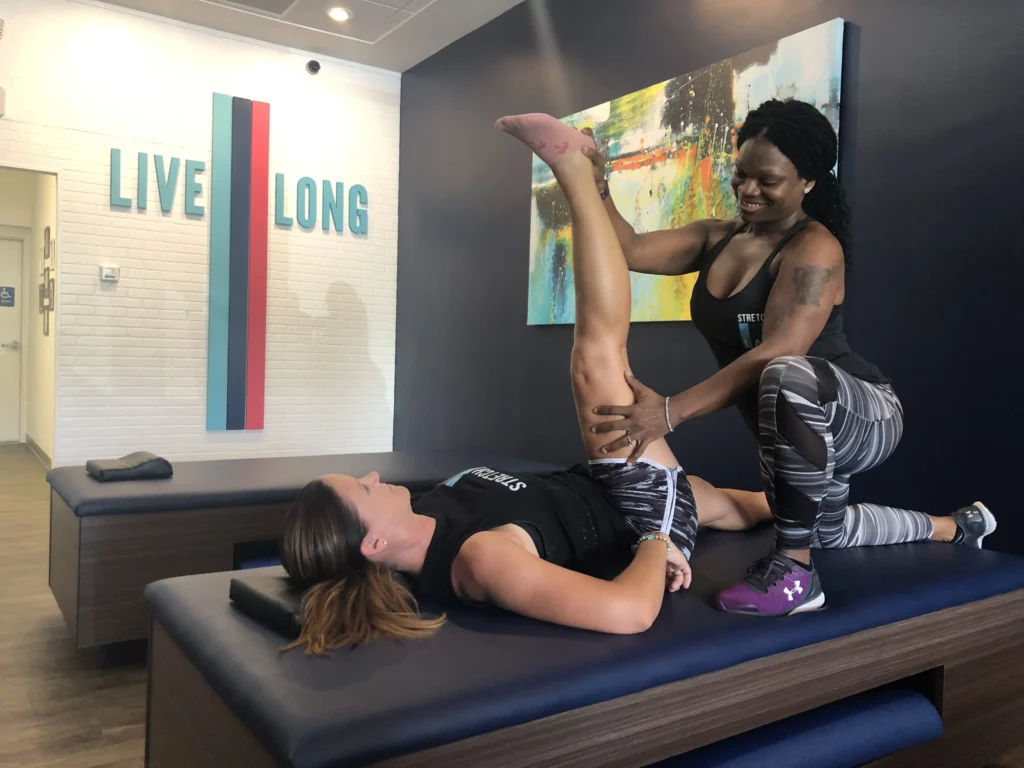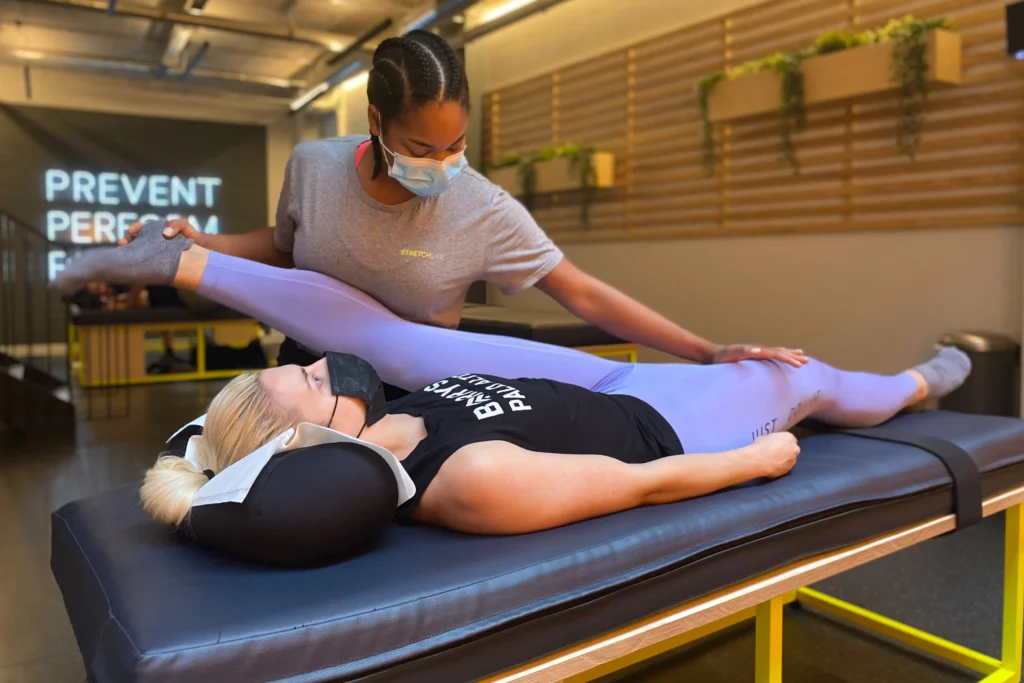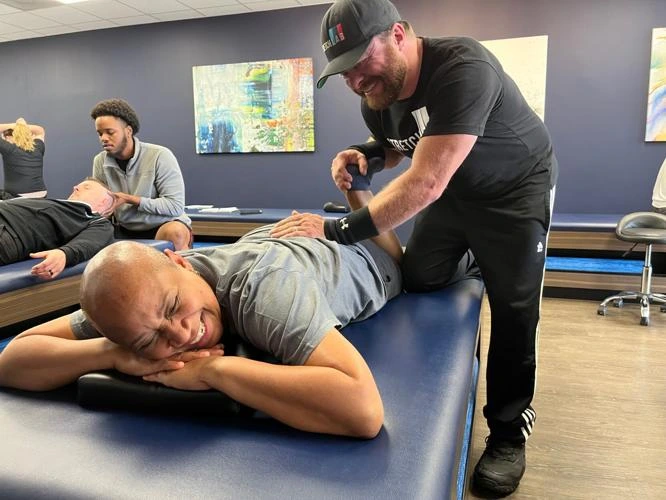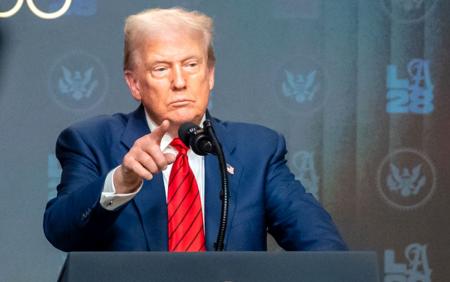A Flexologist is trained to help you stretch your body in the right way. They gently move and guide your arms, legs, and other parts to help you become more flexible. This can help your body feel less tight, move more easily, and reduce pain or harshness. Flexologists make special stretch plans just for you, based on what your body needs. Whether your muscles feel tight or you just want to move better, they are there to help you feel good and stay healthy.
Table of Contents:
Why Stretching is Important?
Just like eating good food keeps your body healthy, stretching is also very important. It helps your body feel good and move better. No matter if you run a lot or sit most of the day, stretching can help you in many ways. Here are some easy benefits of stretching:
- Helps You Move Better: Stretching makes your muscles longer and looser. This helps you move easily and keeps your body safe from getting hurt.
- Makes Joints Bones Work Better: Stretching helps your arms, legs, and other joints move freely. It makes things like bending or reaching easier and less painful.
- Faster Healing After Exercise: Stretching helps blood move to your muscles. This helps you feel less sore after playing or working out and makes your body feel better faster.
- Improves Posture: If your back, neck, or shoulders feel tight, stretching can help. It relaxes those muscles and helps you sit and stand straight.
- Reduces Stress: Stretching also helps you feel calm. It makes your body feel light and relaxed and helps your mind feel peaceful too.
So, whether you play sports or sit a lot during the day, stretching often can help your body feel happy and move easily.
What Happens During Your First Visit to Stretch Lab?
Going to StretchLab for the first time is fun and easy. Here’s what will happen:
- Fill Out a Paper: When you walk in, someone will give you a paper to fill out (a grown-up can help). It asks how your body feels and if anything hurts. This helps the stretch helper know what you need.
- Meet Your Stretch Helper: You will meet a friendly person called a Flexologist. That’s just a big word for someone who knows how to help you stretch your body the right way. They will talk to you about which parts of your body feel tight or sore.
- Time to Stretch: Now, you will lie down on a soft table. The Flexologist will gently move your arms and legs to help stretch your muscles. You just relax! It’s kind of like a big slow-motion body stretch.
- Feel Awesome: After your stretch, your body will feel really good—like it’s not so tight anymore. You might feel like you can move better and stand up taller!
Talking to Your Flexologist

When you visit StretchLab, you’ll have a talk with someone called a Flexologist. They are trained to help your body stretch safely. This talk is important so they know how to help you best. Here’s what will happen:
1. Talking About Your Body
The Flexologist will ask you some easy questions. They’ll ask things like:
- Do your muscles feel tight anywhere?
- Have you had any injuries?
- Do you play sports or exercise?
This helps them learn what your body needs.
2. Checking Your Flexibility
Next, the Flexologist will help you try a few light stretches. This is just to see how well your body moves. They’ll check which muscles feel tight or stiff.
3. Making a Plan Just for You
After the talk and stretches, the Flexologist will make a special plan just for you. The plan will focus on helping the parts of your body that need the most help.
This way, your stretch session is made just for you, so your body feels better and moves easier! from it.
Personalized Stretching Plan
One of the best things about StretchLab is that they make a special stretching plan just for you. A Flexologist will work with you to help in improving your body health. Here’s How It Works:
- A Plan Just for You: After talking to you and learning about your body, your Flexologist will make a plan that fits what you need. This plan helps you stretch better, feel less tight, and heal if you’ve had an injury.
- Focusing on Tight Spots: If your shoulders, hips, or legs feel tight, they will help stretch those parts more. They know how to stretch the right way to help you move better.
- Caring for Old Injuries: If you had an injury before, don’t worry. The Flexologist will be careful and change the stretches to keep you safe while still helping you improve.
- Helping Your Whole Body: The plan helps your body feel less stiff, move more easily, and become more flexible over time.
This special stretching plan is made just for you, so you feel great after every session!
Hands-on Assisted Stretching
At StretchLab, friendly helpers called Flexologists help you stretch your body. They do not just tell you what to do — they help move your arms and legs so you can stretch better and more safely. Why This Is Great:
- Experts Help: Flexologists are trained to stretch muscles the right way. They know how to help each part of your body stretch safely. This helps you become more flexible, and faster.
- Personalized Assistance: Every person’s body is different. The Flexologist helps you do stretches that are right for your body. They gently move you to stretch deeper. They give personalised assistance for every person.
- Focus on Tight Spots: If your back, hips, or legs feel stiff, they’ll pay extra attention to those places. This helps you feel better and move more easily.
- Adjusting According to Your Comfort: If a stretch feels too hard or strange, just tell them! They’ll change it to make sure it feels okay and you stay safe.
With a flexologist helping you, stretching is easier, safer, and even kind of fun! effective, allowing you to improve flexibility and mobility faster.
Recovery Tools at Stretch Lab
- Foam Rollers: These are big, soft tubes that you roll your body on. They help your muscles feel looser and less tight. It’s like a gentle massage that helps your muscles recover faster after exercise.
- Massage Balls: These are small, round balls that help you press on sore spots in your muscles. If you have a tight knot or stiff place, using the ball helps it feel better.
- Breathing Techniques: Stretching Space also teaches you how to breathe deeply. This helps your body relax. When you relax, your muscles can stretch better and not feel as tense.
- Heat and Cold Therapy: Sometimes, Stretching Lab uses hot packs or cold packs on your muscles. Heat helps your muscles loosen up, while cold can make sore muscles feel better more relaxed.
Common Questions about Stretch Lab

What should I wear?
You should wear comfortable clothes that make you move easily, like gym clothes or yoga pants. By doing this, you can stretch without feeling tight or uncomfortable.
How long is a session?
A session may take an hour. First, you will talk to the Flexologist for a few minutes. Then, you will go for stretching for the rest of the time. After that, you will feel relaxed and ready to move better.
Do I need to be flexible?
No, you don’t have to be flexible at all. Stretch Lab is for everyone. If you can’t stretch very much, that is okay. The flexologist will help you stretch and get more flexible.
Is it safe?
Yes, Stretch Lab is very safe! The Flexologists are trained to help you stretch without getting hurt. They will make sure you don’t stretch too much and that make you feels okay.
How often should I come?
Most people go to Stretch Lab about 1 or 2 times a week. The Flexologist will talk to you about what’s best for you. They will help decide how often you should come to feel your best.
Conclusion
Stretch Lab is a great place to help your body feel better and move more easily. The Flexologists are friendly experts who will guide you through stretching and make a personalised plan for you. Whether you want to get more flexible, recover from exercise, or just feel better, Stretch Lab can help. Regular visits can make your body feel less harsh, make your movement better, and keep you healthy. Try Stretch Lab and feel the difference.

